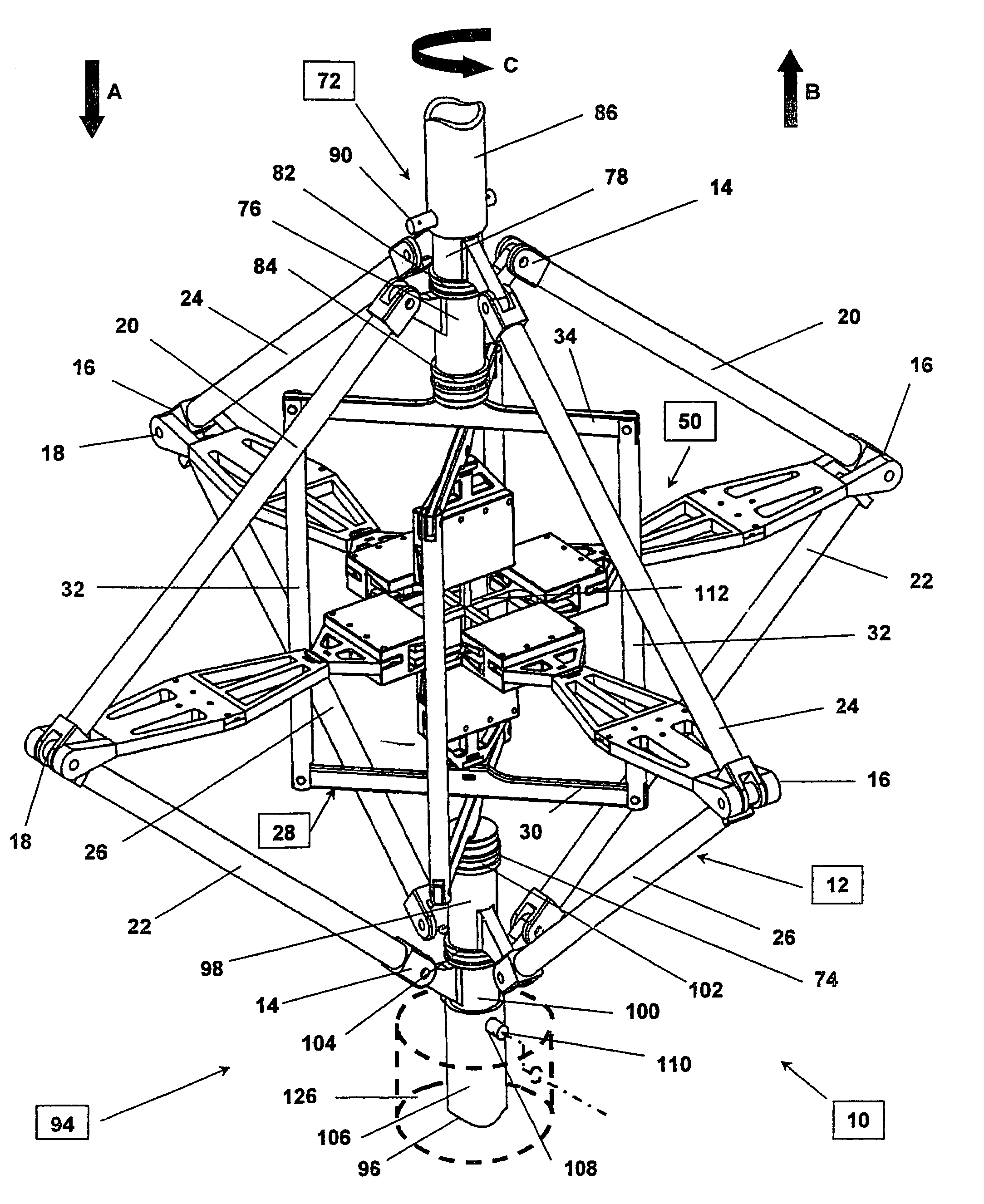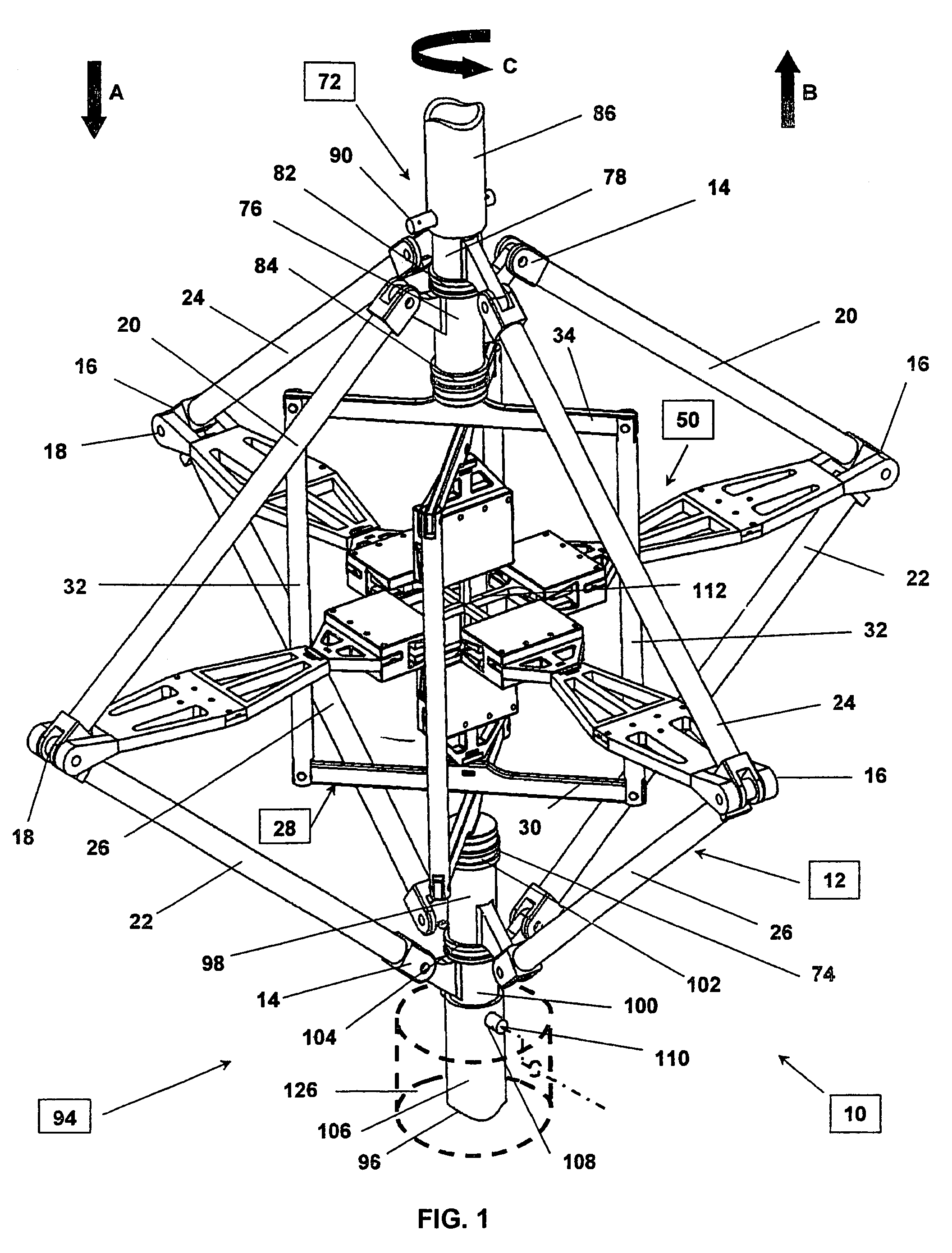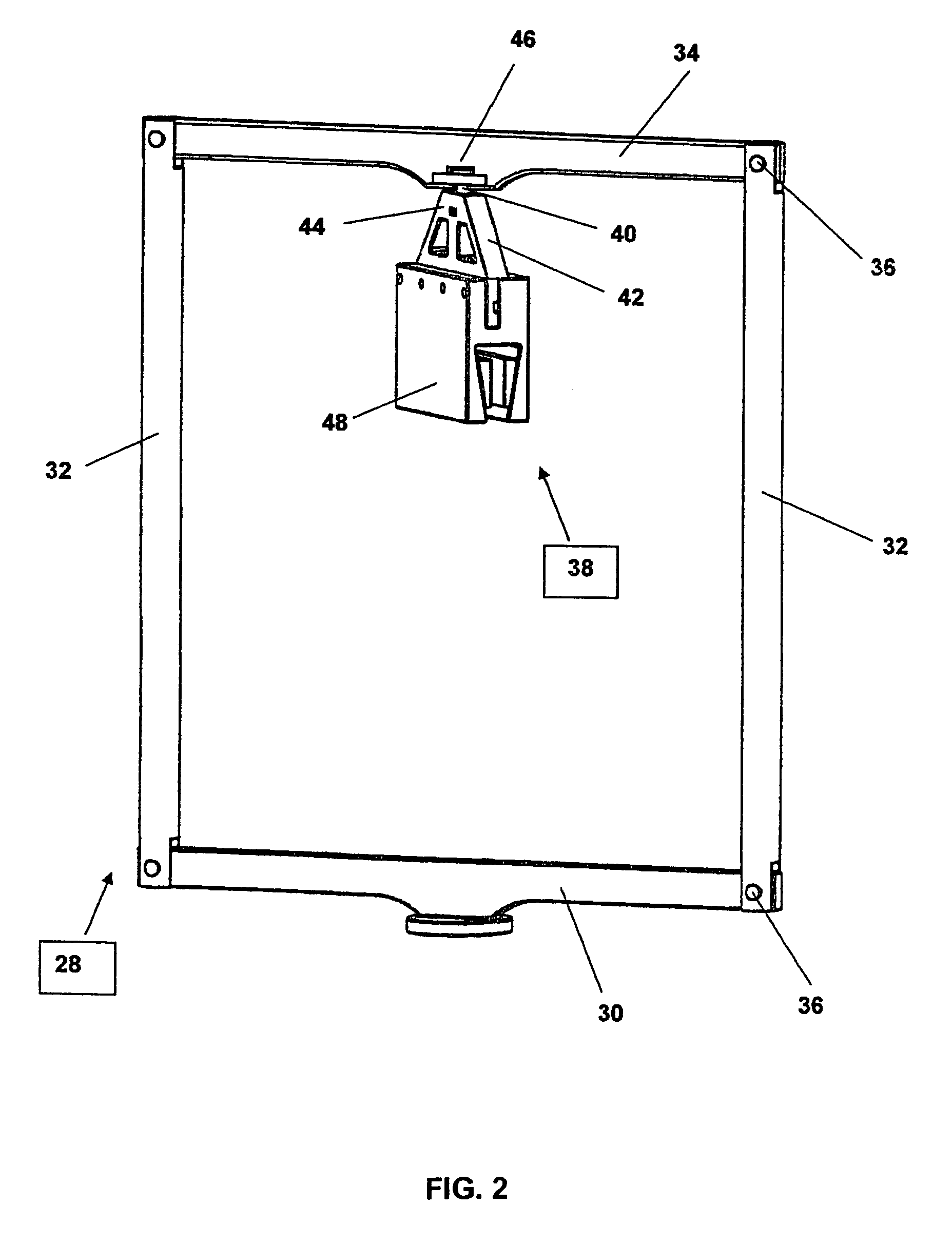Triaxial tension compression, shear testing apparatus
a technology of shear testing and compression, applied in the direction of tension measurement, force/torque/work measurement, instruments, etc., can solve the problems of complex responses, unrefined structure technology, and difficult to analyze reliable structures, etc., to facilitate triaxial testing, easy to assemble and disassemble, and cost-effective
- Summary
- Abstract
- Description
- Claims
- Application Information
AI Technical Summary
Benefits of technology
Problems solved by technology
Method used
Image
Examples
Embodiment Construction
[0049]Referring now to Figures (FIGS.) 1–9, wherein like numerals refer to like elements throughout the several views, a triaxial testing apparatus 10 is shown in which the triaxial testing apparatus comprises a plurality of horizontal force members 12 and a vertical loading assembly 28 connected together to top joint assembly 72 and to bottom joint assembly 94. The horizontal force members 12, comprising linkages 20, 22, 24 and 26, are further connected to horizontal loading assembly 50 and to horizontal clamping assembly 64; and are similarly attached to vertical loading assembly 28 and to vertical clamping assembly 38. The horizontal clamping assembly 64 and the vertical clamping assembly 38 function together to rigidly clamp triaxial test specimen 112 in place for material properties testing during operation of the triaxial testing apparatus 10.
[0050]The top joint assembly 72 includes first and second sleeves 76, 78, and the bottom joint assembly 94 includes third and fourth sle...
PUM
| Property | Measurement | Unit |
|---|---|---|
| material properties | aaaaa | aaaaa |
| horizontal force | aaaaa | aaaaa |
| rotational and linear movement | aaaaa | aaaaa |
Abstract
Description
Claims
Application Information
 Login to View More
Login to View More - R&D
- Intellectual Property
- Life Sciences
- Materials
- Tech Scout
- Unparalleled Data Quality
- Higher Quality Content
- 60% Fewer Hallucinations
Browse by: Latest US Patents, China's latest patents, Technical Efficacy Thesaurus, Application Domain, Technology Topic, Popular Technical Reports.
© 2025 PatSnap. All rights reserved.Legal|Privacy policy|Modern Slavery Act Transparency Statement|Sitemap|About US| Contact US: help@patsnap.com



